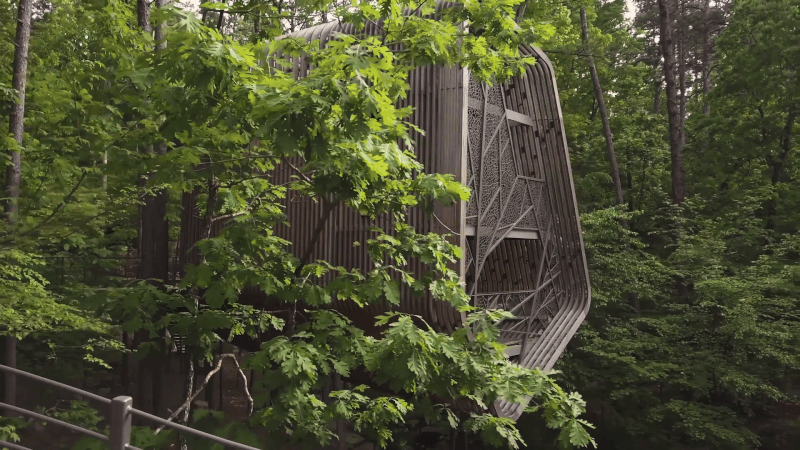This post was originally published on Colossal
Within southwest Arkansas’s Garvan Woodland Gardens, a four-story communal treehouse welcomes visitors to the Evans Children’s Adventure Garden. Designed by modus studio and constructed in 2018, the whimsical yet contemporary structure is embraced by pine and oak trees, connecting visitors to the surrounding woods via elevated walkways and lookouts.
“This unique structure is a defining small project for modus,” the team says, sharing that the work draws on their own childhood experiences in the region. They add that “it is easy to take for granted our strong connection to the creeks, forests, insects, and animals of Arkansas. However, many children in the modern world are unfortunately disconnected from this type of play.”

The studio took dendrology, the study of trees and wooded plants, as a starting point for the overall form and the way people interact with the space as they move along its passageways and stairwells.
The curving screen encasing the structure is composed of 113 fins made from locally sourced Southern yellow pine. Airy slats and metal screens redolent of branches let the light and breeze filter through, maintaining visitors’ connection to the surrounding Ouachita Forest from numerous vantage points.
Designers conceived of a space that would refocus people’s attention on the natural wonders of the canopy and allow visitors to climb higher and see farther. “The tree house uses a rich visual and tactile environment to stimulate the mind and body and strengthen connections back to the natural world while accommodating the needs of all users,” the firm says.
modus studio was recently selected to exhibit in the U.S. Pavilion at the 2025 Venice Architecture Biennale. If you’re in Arkansas, you can also see Coler Mountain Bike Preserve, where the team designed a series of pavilions and dynamic bridges. Find more on the studio’s website. (via Plain Magazine)







Do stories and artists like this matter to you? Become a Colossal Member today and support independent arts publishing for as little as $7 per month. The article Visitors Commune with the Forest Canopy in a Four-Story Treehouse in Arkansas appeared first on Colossal.





0 Comments